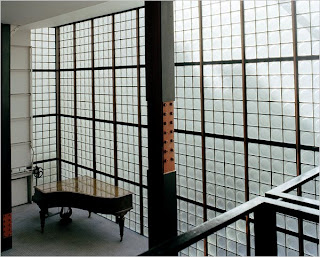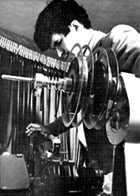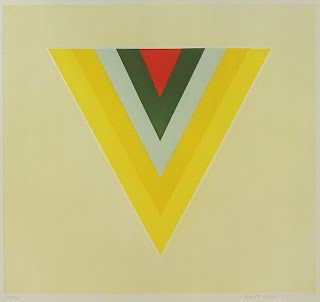
In preumblarile noastre prin Galicia nu puteam rata ocazia unei vizite la malul Atlanticului, chiar daca acest Atlantic nu se lasa zarit decat la orizont, departe, daca vrei sa-l admiri de pe malurile Spaniei. Asa ca din Santiago de Compostela am luat trenul regional – adica un fel de personal prin costul biletului, nu prin viteza care nu scadea sub 120 km pe ora – si in circa 30 de minute am ajuns in orasul-port A Coruña.
Prima impresie – prima exclamatie: ce frumos e! Apa si pe dreapta, si pe stanga, de nu stiai care e oceanul si care estuarul fluviului, numit aici nu estuar, ci
ria, deoarece seamana cu fiordurile scandinave, dar e facut din apa dulce si apa sarata, este extrem de intins ca suprafata si intra foarte adanc in uscat. Am aflat de indata de la ghid: orasul e situat pe un fel de peninsula, pe dreapta se afla
ria, pe stanga – oceanul. A fost din totdeauna loc de acostare si de prada pentru pirati – mai ales pentru corsarii englezi, sustinuti, dupa cum se stie, de insasi regina Elisabeta, spune ghidul cu naduf, si ne conduce in piata centrala a orasului, Plaza Maria Pita, unde se ridica statuia unei femei in atitudine razboinica.
Este Maria Pita, sotia unui comerciant bogat din orasul de sus – cartierul bogatilor era in orasul de sus, iar al marinarilor si pescarilor saraci, in orasul de jos.
A fost contemporana cu piratul Francis Drake (de fapt, amiral in marina englezilor), care a atacat, inca o data, orasul, si a ajuns la partea de sus, ucigandu-l si pe sotul acestei femei. Atunci Maria Pita a pus mana pe sabia sotului si a chemat la lupta pe toti cei ramasi vii in orasul de sus, inclusiv vaduvele, si au reusit sa-i alunge pe pirati.
Va sa zica, VICTORIE pentru femei, in primul rand! Miscarea feminista mondiala nu stie prea multe despre eroinele ei, ar trebui sa se faca ceva in sensul acesta... La noi, au sters-o de pe tablita bulevardului care-i purta numele pe Ana Ipatescu, singura femeie care a dat numele unei strazi principale din Bucuresti...
Dar sa ne intoarcem in A Coruña, pe cheiul dinspre Atlantic: daca te apropii de apa in portul de agrement al orasului, o sa vezi pesti mari de peste 60 cm lungime inotand intr-o apa albastru-verzui de o mare frumusete... Oare cum or fi facut astia, ca la noi in portul Constanta... Desigur, pe mal – palmieri langa stejari, o Spanie verde care contrazice tot ce ne inchipuiam noi despre aceasta tara; pe toata lungimea acestei faleze stancoase circula un tramvai-bijuterie: un singur vagon, cu aspect de vehicul de la 1890, lustruit si vopsit in culori vesele, te indeamna sa-l explorezi si din el, sa descoperi peisajul. Costa 1 euro, si merita: inauntru, bancute din sipci de lemn lacuit, manere de alama stralucitoare, geamuri moderne dar cu forma
fin de siecle: sus, pe langa tavan, are si o franghie care duce la un clopot: cand vrei sa cobori, tragi semnalul! Vatmanul nu are cabina, sta pe un taburet rotund si inalt, are un fel de volan metalic, stralucitor intre uneltele de condus, dar si un sistem electronic, pitit pe dupa acest volan...
Inaintam incet, scartaind, si vedem cum se profileaza pe cer un turn cam patrat, facut din blocuri mari de piatra; ca sa nu va inchipuiti ca primii vizitatori ai orasului au fost piratii, va vom spune ca acesta e
Farul lui Hercule... Farul lui Hercule dovedeste ca pamanturile acestea au fost cunoscute inca din vechime – desi ma indoiesc ca insusi eroul lui Homer ar fi venit aici (cam prea multe locuri il revendica)... Oricum, e un monument cu 360 de trepte – cine are suflu, e invitat sa le suie si nu va regreta: privelistea este extraordinara...
Tramvaiul ne descopera apoi mici plaje ascunse intre stanci, amenajate unele pentru doritorii de plaja, altele pentru pasionatii de sporturi nautice cu motor.

Daca parasim cheiul si ne indreptam privirea spre oras, descoperim o parte moderna, cu blocuri foarte inalte, albe, avand, toate, ceea ce noi romanii numim balcoane inchise, dar care de fapt sunt pridvoare, sau verande, dupa cum le numesc spaniolii: sunt toate la fel – albe, cu geamuri multe si mici – si formeaza un ansamblu arhitectural deosebit. Se pare ca dateaza din cele mai vechi timpuri – sec. XIV cel putin – si istoria lor e ciudata: locuitorii orasului erau fie pescari, fie agricultori care-si aveau pamantul in apropierea orasului. Iarna aici e vijelioasa si ploioasa – nu friguroasa! – asa ca agricultorii aveau nevoie de un spatiu unde sa-si depoziteze o parte din recolta – iar pescarii, de un spatiu unde sa-si puna navoadele la iernat! Oricum, ideea de balcon inchis dupa model spaniol e estetica, nu ca ghiveciul romanesc, fiecare dupa capul lui, isi inchide balconul, si pana la urma blocurile par sa fie dotate cu...cotete!
Orasul vechi are farmecul oraselor medievale spaniole – stradute stramte, povarnite, cladiri construite din blocuri de piatra – dar locul cel mai straniu imi pare a fi gradina in care spaniolii au ridicat un monument unui comandant englez care, cu pretul vietii lui, si-a salvat oamenii, tinandu-i pe loc pe invadatorii francezi ai lui Napoleon pana ce soldatii englezi au reusit sa se imbarce cu totii, in portul din apropiere. Este un episod tulbure din istoria spaniolilor, deorece insusi regele Spaniei a abdicat in favoarea fratelui lui Napoleon si a permis trupelor franceze sa inainteze. Numai ca poporul nu a acceptat decizia monarhului si a opus rezistenta peste tot unde a fost posibil. Aici, in A Coruña, se spune ca insusi comandantul francez le-a spus spaniolilor ca englezul merita un monument. Ceea ce s-a si facut.
Dar a propos de istoria orasului: exista un episod cu multa culoare care explica avantul economic al asezarii, si anume: prin sec. XVI-XVII, dupa descoperirea Americii, un principe spaniol urma sa se casatoreasca cu descendenta Casei de Austria – asa fusese stabilit pe cai diplomatice. Sosind momentul in care principele trebuia sa se duca la curtea austriaca – la prima intalnire, care va sa zica, deci trebuia sa faca o impresie super, nu-i asa? – familia regala si Consilul coroanei ajung la concluzia ca nu sunt bani pentru finantarea calatoriei... Asta nu trebuie sa mire pe nimeni, se stie ca imperiul spaniol era doar carausul aurului incasilor, care se oprea, fara execeptie, la bancherii din Tarile de Jos...
Atunci, Principele nostru se gandeste sa mai faca o incercare si se indreapta spre A Coruña, unde convoaca pe mai-marii orasului,
El Cabildo (Consiliul) si le cere bani. Acestia – minune! – hotarasc sa-i dea banii necesari, si principele isi rezolva cu brio problema. Drept rasplata, cand se intoarce la Madrid, ofera portului A Coruña monopolul mirodeniilor care veneau din Indii...
Ne-am luat adio de la legende, de la istorii si de la privelistea marina tocmai cand oceanul a inceput sa ne trimita un vant in rafale, stopit cu picaturi fine de ploaie...
Gabriela Banu
 Suprematism and Constructivism had opposite aims while sharing the same universe: a set of geometric figures.
Suprematism and Constructivism had opposite aims while sharing the same universe: a set of geometric figures. Malevich and Mondrian were in search of a mystical reality. Other artists belonging to Suprematism or De Stijl would not share the same mystical preoccupations, but all of them would try to understand the essence of art and the realm of what is beyond art (also beyond language, beyond reasoning - I would try to talk sometime of Zaum and of Pobeda nad solntzem).
Malevich and Mondrian were in search of a mystical reality. Other artists belonging to Suprematism or De Stijl would not share the same mystical preoccupations, but all of them would try to understand the essence of art and the realm of what is beyond art (also beyond language, beyond reasoning - I would try to talk sometime of Zaum and of Pobeda nad solntzem).





























